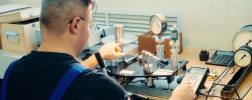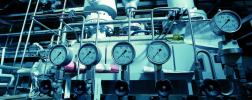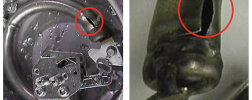While measuring gauge pressure is sufficient for most industrial applications, sometimes it is necessary to use an instrument that displays absolute pressure, as this reading does not fluctuate depending on altitude or weather conditions. When selecting a pressure …
All posts by Hardy Orzikowski
Three Reasons to Use a Diaphragm Pressure Gauge
Hardy Orzikowski | Know-how, PressureWhen standard pressure gauges reach their limits, the process industry can use diaphragm pressure gauges to measure low pressures and protect against overload in all types of applications, including ones with aggressive or hygienic media. This article is a …
WIKA’s POLARgauge and POLARvalve Series, Instruments for Extremely Low Temperatures
Hardy Orzikowski | Pressure, TemperatureDesigned for reliable service in extremely low ambient temperatures, WIKA’s POLARgauge ® series and POLARvalve protective devices accurately monitor and control a process’s working pressure, differential pressure, and temperature in places where standard …
Burst Pressure: What It Is and Why WIKA Chooses Not to Publish It
Hardy Orzikowski | Know-how, PressureBurst pressure is a factor to consider when choosing industrial pressure gauges, but it is far from the only one or even the top criterion. Find out more about burst pressure and why WIKA USA provides this information upon request only. When WIKA USA’s product …
WIKA Introduces Revolutionary Liquid-Filled Gauge with Flexible Window
Hardy Orzikowski | Applications, PressureIn WIKA’s new FlexWindow™ liquid-filled gauge, an optically clear liquid silicone rubber (LSR) replaces glass or polycarbonate for greater safety and durability, unimpaired reading, and no need for pressure venting. Liquid-filled gauges are excellent …






